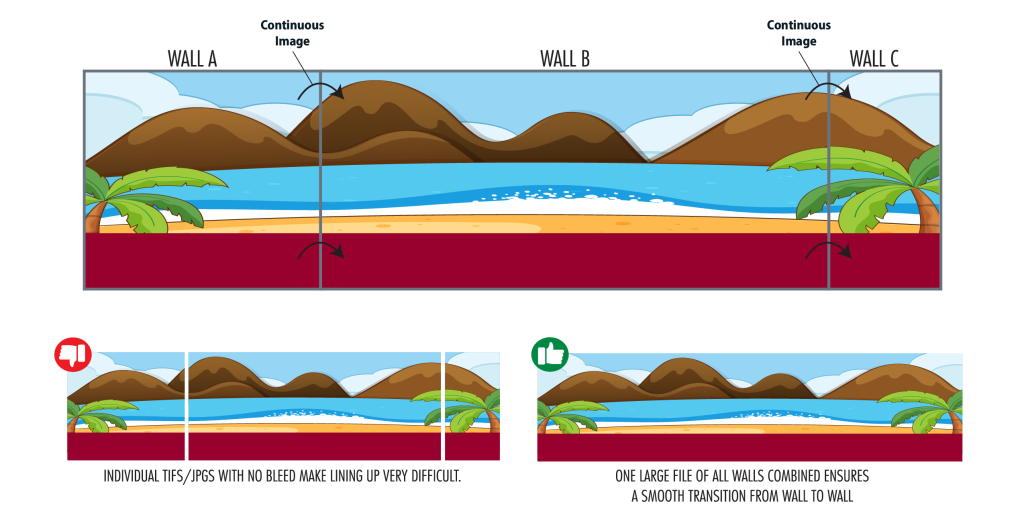How To : Large Format Graphics
Preferred File Types
We accept the following file types for large format graphics: EPS, AI, PDF, PSD, TIFF, PNG, JPG. Vector formats are highly preferred.
Vector File Types
- Vector files are line art that can be infinitely scaled in size. Vector formats include AI, EPS, and PDFs. Please check your Active Zone portal for Illustrator templates.
- Text: All text in the document should be converted to outlines to avoid font replacement issues.
- PDFs: If submitting a PDF, all raster images must be embedding or links included with all art submitted.
- No 72 dpi web images: Images that are thumbnail sized JPGs and GIFs from the web are not a high enough resolution to be used for print.
Raster File Types
- Raster files are pixel based, not line art. If raster file types (PSD, PNG, JPG) must be used, only files that are the correct size and greater than or equal to 100 dpi can be used.
- Text: All text in the document should be flattened to layers to avoid font replacement issues.
- PDFs: If submitting a PDF, all raster images must be embedding or links included with all art submitted.
- No 72 dpi web images: Images that are thumbnail sized JPGs and GIFs from the web are not a high enough resolution to be used for print.
Bleed, Trim, and Safe Areas
Bleed : Printing that goes beyond the edge of the final size of the print. If art goes to the edge, please add extra
image or color extending to the solid black line.
Trim Line : Line that designates the final size of the product.
Safe Zone : Keep all text, logos, and important images at least 2 inches away from the trim line to prevent unwanted distortion/obscuration by graphic accessories.
Please pay close attention to bleed size vs final art size in the templates.
Lining Up Graphics Across Multiple Panels
Should your artworks exhibit a cohesive thematic or stylistic alignment, we kindly request that you design them as a unified, continuous piece with 2″ bleed on all sides.

